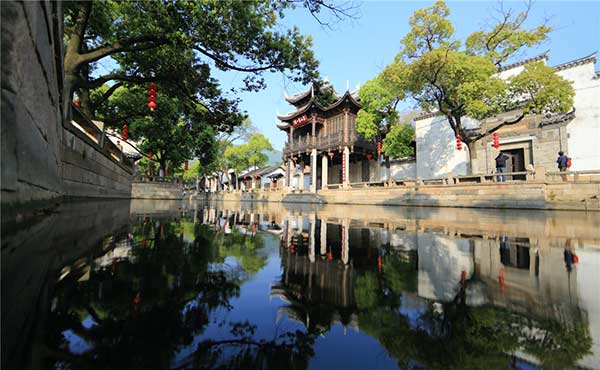 |
|
Ancestral temples located along a branch of the ancient Beijing-Hangzhou Canal in the old town of Huishan, Jiangsu province. [Photo provided to China Daily] |
The ancestral temples, lined up along a branch of the ancient Beijing-Hangzhou Canal, vary significantly in size, architectural style and date of construction.
The largest temple, Jichang Garden, covers an area of 9,000 square meters. It is also one of the country's most renowned gardens and receives millions of visitors every year.
Most of the temples in the town were built in line with traditional Chinese architectural principles. Others, constructed in modern times to commemorate famous businesspeople, such as Yang Oufang, one of the country's earliest cotton-spinning factory owners, reveal strong Western building influences.
The oldest temple dates to the Han Dynasty (206 BC-AD 220). It was built to commemorate an emperor who contributed greatly to flood control in the area.
"Visitors can learn Chinese history and get a glimpse of traditional Chinese culture at these ancient halls," said Li Wenyang, a specialist of cultural studies who has written a book about the 138 historic figures commemorated at the 118 temples.
"We have more than 20 types of ancestral temples here in Wuxi," Li said. "They cover almost all temple types except for the imperial one. We have temples to remember ancestors, commemorate ancient people known for their merit and even one to worship the god of flowers for bumper harvests."
